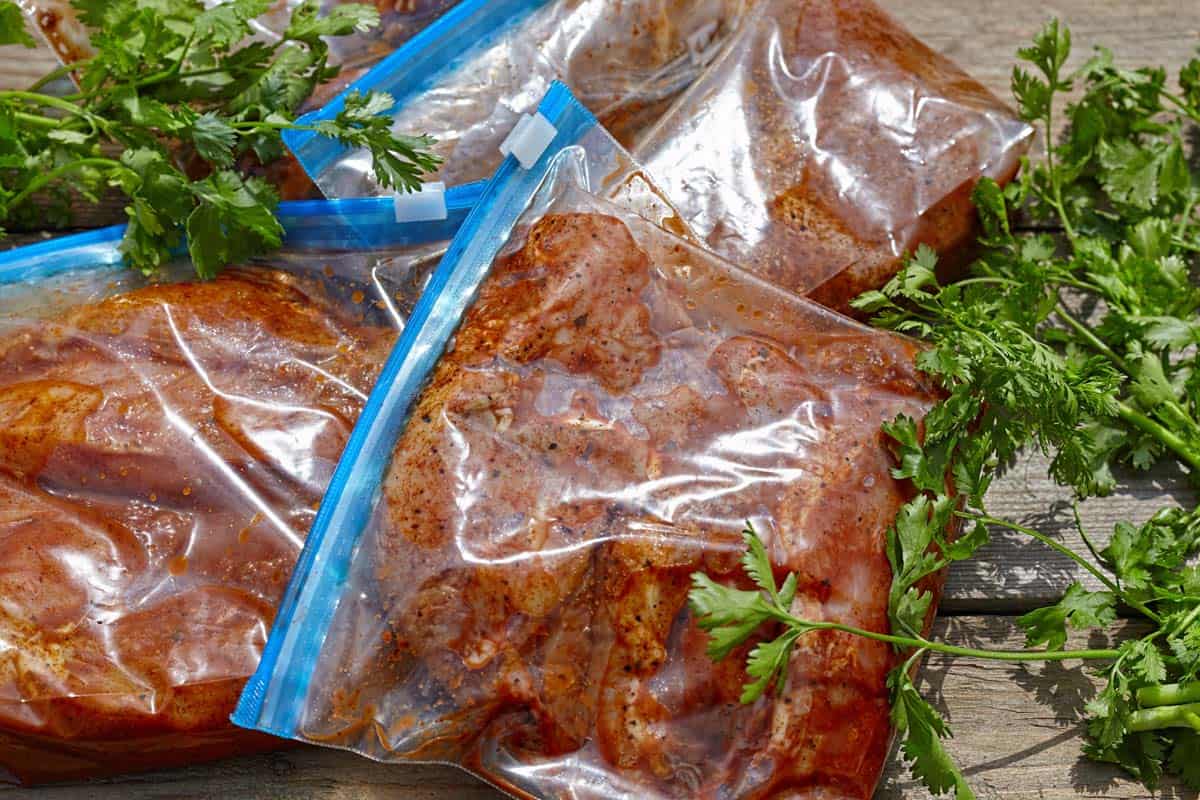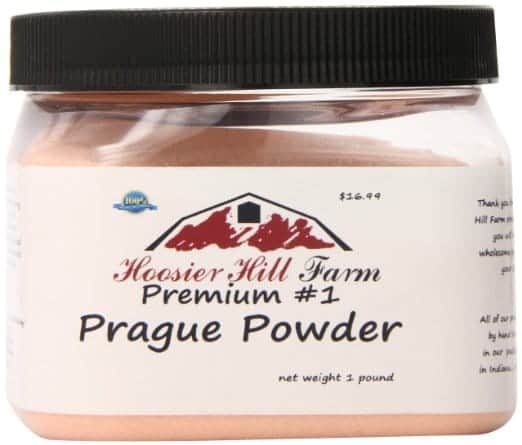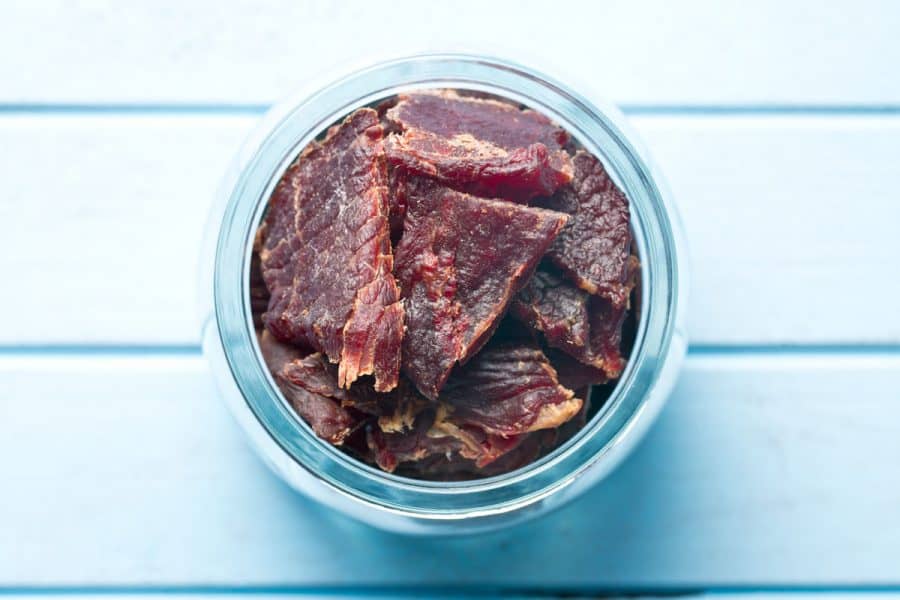How to Pre Cook Beef Jerky
This post may contain affiliate links. Delight read my privacy policy.
When making homemade hasty it is really important to follow strict nutrient safety precautions to preclude any foodborne illnesses. The most common leaner growths in poorly fabricated hasty are Salmonella and East. Coli. These can be deadly, making nutrient safety extremely important when making hasty.
By following these steps, you will prevent bacteria growth and have plenty of safe hasty for everyone to bask!
How to brand rubber hasty
one. Make clean your kitchen, utensils, bowls, and all other equipment with h2o and bleach. Also wash your hands with soap before treatment whatsoever raw meat.
2. Thaw frozen meat in the refrigerator instead of at room temperature to prevent leaner growth.I see many people put meat on the counter and leave it for hours. This is NOT condom and should Not be done. Exit yourself aplenty time to thaw your meat in the refrigerator.
3. Marinate the meat at a temperature between 36-40°F (two°C-iv°C). Do non marinate at room temperature. Keep meat in the fridge while you mix your marinade together. Bacteria can abound fast on raw meat left out at room temperature. Later marinating, do non save and re-utilise a marinade.

4. At the beginning of dehydrating, heat the jerky to 160°F (71°C) to kill dangerous bacteria.For jerky to be safe, it should be heated to 160°F for beefiness and 165°F for turkey or chicken hasty BEFORE you dry out your strips.
Heating the jerky later on dehydrating might not kill all bacteria due to it becoming more estrus resistant during the drying process. This is why bringing your hasty to 160ºF at the kickoff of your jerky making procedure is recommended past the USDA.
If you take a dehydrator that will oestrus jerky to this temperature, you tin bypass this initial heating phase. Meet my page on Dehydrator Reviews for more information.
If your dehydrator does not heat the jerky to 160°F, pre-rut the meat in an oven after it has finished marinating. Every bit an extra precaution; I Ever pre-heat any turkey or craven jerky I make, equally well equally use curing salt, to make sure it is rubber to eat. I like being as safe as possible when using fowl.
Pre-oestrus ¼″ slices of beef to 160°F, it takes virtually ten minutes in a 300°F (149°C) oven. To pre-heat ¼″ slices of turkey to 165°F, nigh viii minutes at 300°F (149°C) does the job. Not all oven are the same, so wrapping 1 strip around an oven thermometer while baking is the all-time way to determine when the jerky strips reach the desired temperature.
five. Utilize curing salt to aid prevent leaner from growing. In this age where the craze is only eating Organic Foods, curing salt might not be in your recipes. While I do understand the 'staying abroad from preservatives', be extra conscientious when not using them when making jerky!
When the correct amount of curing salt is used, in that location are no harmful effects that many believe come from using these salts. If you decide non to use curing salts, make sure that you follow the other safety precautions closely. Especially heating the meat to 160ºF to kill whatsoever bacteria and eat the jerky within a couple of days.

With that said, I Do recommend using cure when making ground meat jerky considering the meat has been handled and processed making information technology more susceptible to having bacteria. I also recommend using curing table salt when making turkey or chicken jerky due to salmonella.
Better to be safe than sorry! So in brusque… No jerky recipe NEEDS cure as long equally beef is heated to 160°F and fowl to 165°F. Only information technology is another line of defense to impale bacteria and allows your hasty to terminal longer.
6. Store jerky in a cool dry place for upwards to a week or vacuum seal and freeze for up to six months.

That'due south it folks! Making jerky is both fun and VERY rewarding. Just make sure to continue in mind these tips on how to keep you and your loved ones safe when making and eating bootleg hasty.
For more than information, visit the USDA Webpage on Jerky and Food Condom.
Related Posts:
-
The Ultimate Beefiness Jerky Recipe
-
Storing Beef Jerky
-
How to Make Beef Hasty in a Dehydrator
Source: https://www.jerkyholic.com/6-steps-to-making-safe-jerky/

Post a Comment for "How to Pre Cook Beef Jerky"